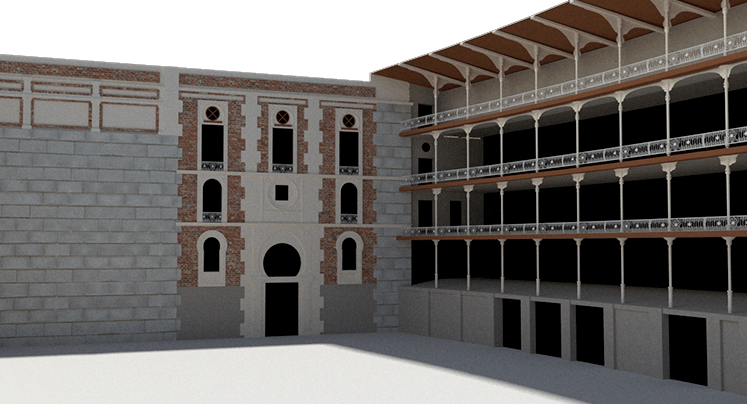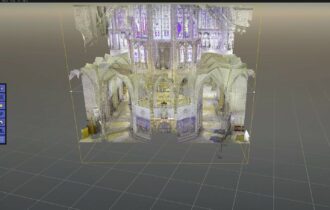
Augmented and Virtual Reality: the Future of Architecture
The development and breakthroughs of augmented and virtual reality have significantly transformed many industries in recent years. Construction and architecture are not far behind, as the introduction of these technologies is being seen in significant changes in design, modeling, and construction.
Their introduction has benefits in tasks involved throughout the entire job process, especially in how a design is presented. It helps clients and architects make changes before construction begins, significantly reducing costs, time and errors.
In the U.S. alone, most architectural firms are incorporating VR, AR, or MR into their processes, which is going to be a boom in work globally. For this reason, we will tell you all the details about its importance and the benefits it brings.
How is Virtual and Augmented Reality used in Architecture?
Prototype creation
Augmented reality and virtual reality in architecture enable the transformation of CAD models into photorealistic renderings and augmented reality scenes. This is tremendously useful for architects, allowing them to get 3D building models off the screen and into the real world in record time.
Turnaround times are accelerated, and the design process is streamlined because all project members can access virtual models instantly.
Real-time project visualization
Augmented reality allows us to have an accurate view of what will be built in the future, showing potential buyers the exact vision of their project in a real setting.
Models can be viewed from multiple angles, even standing on the actual site. You only need a smartphone, tablet or mixed reality glasses to display a full-scale model when the foundations are not in place.

Sustainable models
A more sustainable focus is one of the most common uses of virtual and augmented reality in architecture. Architects are increasingly concerned about environmental conditions, and their designs must address the impacts of climate change.
VR visualizes sustainable designs, enabling environmental analysis and improving processes at every stage or carbon emission. It is a unique opportunity to visualize how future generations will live and see the exterior of a house color-coded like a heat map. This will allow us to identify how well it is thermally insulated and its level of energy efficiency.
Virtual tours
Virtual tours are another possibility provided by augmented and virtual reality if we cannot travel to the construction site. Architects can quickly create a guided tour that allows customers simple and personalized navigation.
This is ideal for real estate companies that want to show a design and customize it according to customer feedback. 3D models or immersive experiences can be used to help sell the property. It is also perfect for galleries, touristic places, shows, etc.
And these are just a few examples because the possibilities are endless, and the benefits of introducing this type of immersive technology are invaluable.
Why is Virtual Reality and Augmented Reality important to Architecture
The construction industry unites many individual disciplines working together on the same project, making it a very fragmented industry. This decentralization means that communication between all parties makes the process much longer than necessary and is limited to 2D images even when projects are designed in 3D.
The introduction of technologies such as AR and VR revolutionize this way of communicating architectural information, moving to an immersive and fully 3D model where engineers, construction companies, real estate companies, and clients gain access to structural, mechanical, or electrical information that they did not have before.
In addition, these models eliminate paper drawings, saving resources and bringing plans to life. This provides a unique experience and walk-through for each project, allowing interaction with the models and suggestions for changes before construction begins.
Benefits of Augmented Reality and Virtual Reality in Architecture
Streamline processes
Thanks to augmented reality, professionals can see what their designs will look like on an accurate model, allowing changes to be made according to customer requirements.
This has only positive repercussions, facilitating decision-making and giving the possibility of making a much more impactful and truthful presentation of what is to be developed.
Equipment monitoring
In every construction project, numerous types of equipment require detailed inspections to ensure that each phase of the project is trouble-free. RM helps in monitoring the proper functioning of each piece of equipment, replacing traditional manuals with documented instructions in real environments and adapted to each case, followed by 3D elements that allow virtual exploration of each element.
Increased security
Employee safety training is critical to ensure employees are protected throughout the project process. Thanks to technology, it is possible to provide remote support that connects experts with workers in real-time.
Communication between both parties is improved, and the process is streamlined in real-time, thanks to valuable and practical training that empowers them in this area and avoids significant problems.
Improved customer communication
Communication between all parties is critical throughout the entire process of a project. After all, it is made for the end customers, so meeting their requirements from the beginning is essential for the final success.
Remote support based on augmented or virtual reality allows a closer connection between architect and client, where 3D models of the projects can be discussed and adjusted to the needs of each case thanks to a complete and realistic image.
Increased direct sales
According to studies, the sale of a property increases when floor plans are viewed, increasing clicks by 52%. If we add the possibility of showing it in real-time to a traditional floor plan, these numbers grow exponentially with augmented reality. It simplifies the process, speeds up time, and increases profitability.
Unleashes creativity
Although it is still in its earliest stage and has a long way to go, augmented reality and virtual reality in architecture allow more exciting and original designs to be exploited. Before, trying out daring ideas was more complicated, because architects could not see if they would work. Now, they can express their creativity without limits, see how it would look in real life, and discard the idea if it doesn’t work after investing much less time.
VR, AR, and MR technologies are transforming the industry in ways that could not have been imagined a decade ago, which makes it all the more exciting to think about how it will unfold in the coming years. What is certain is the huge opportunity that the architecture and construction industry has in front of them, both in the way they design and build in the physical world.
Investing in these technologies is the best way to make a company stand out and lead the sector. With Evergine, we offer you the possibility to make your project a reality and take it to the next level. If you want to know more about our projects, discover our success stories in architecture.


